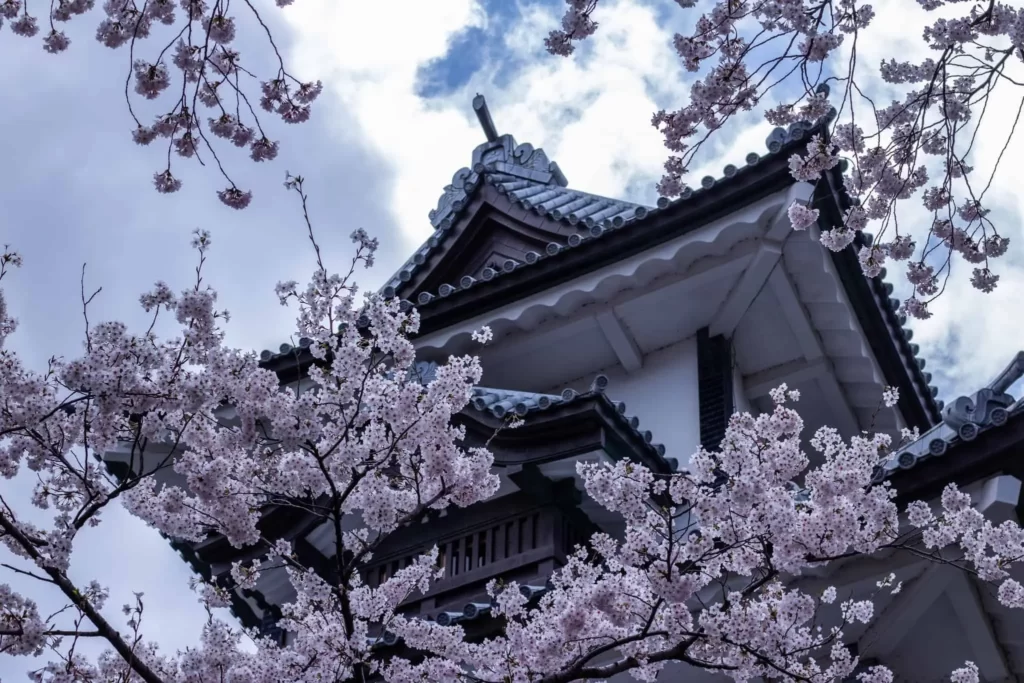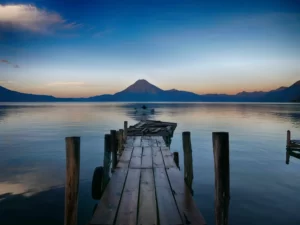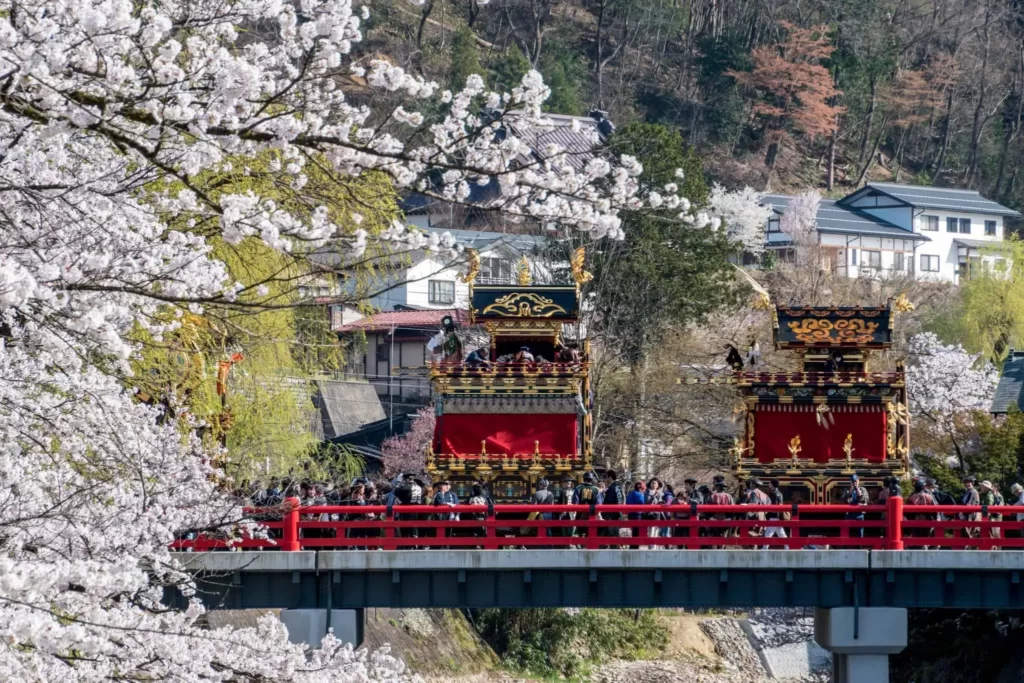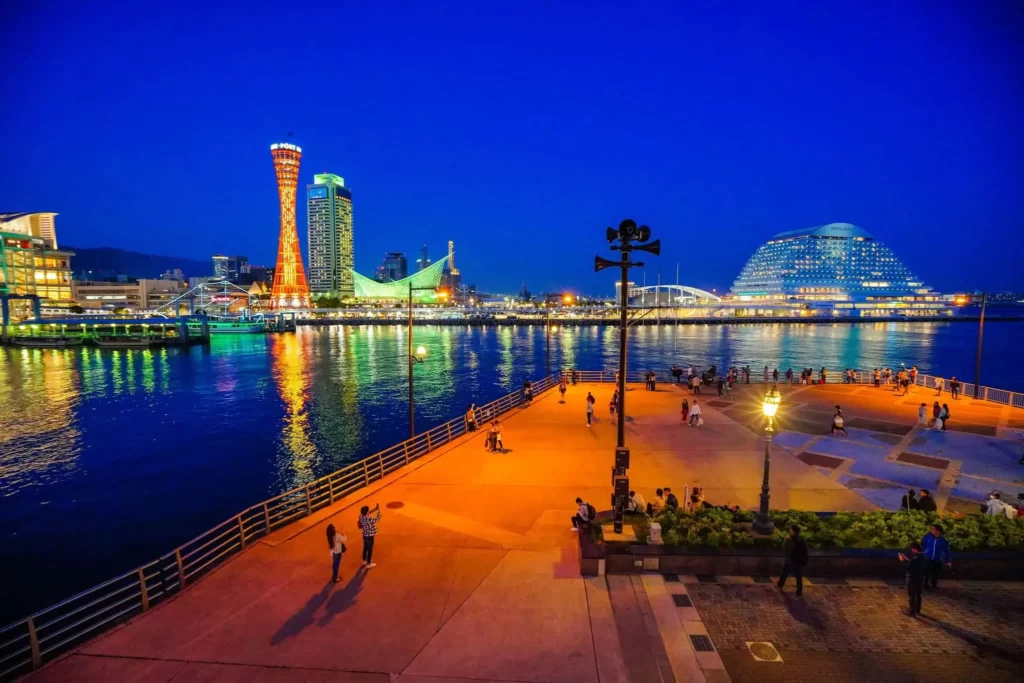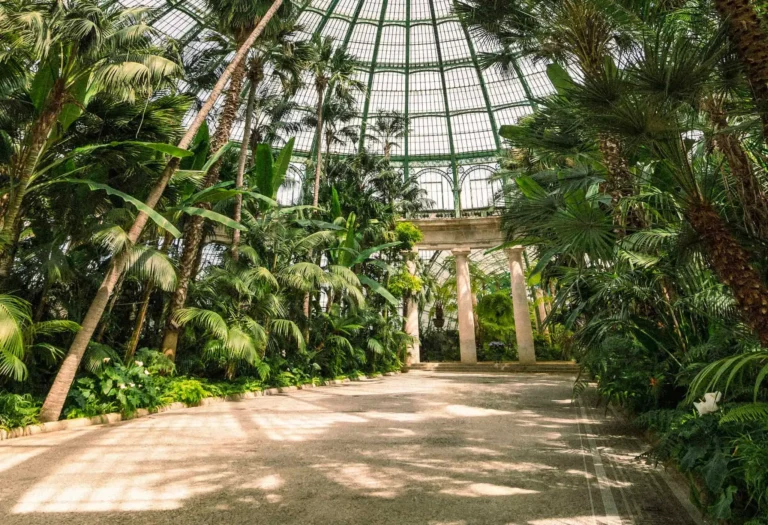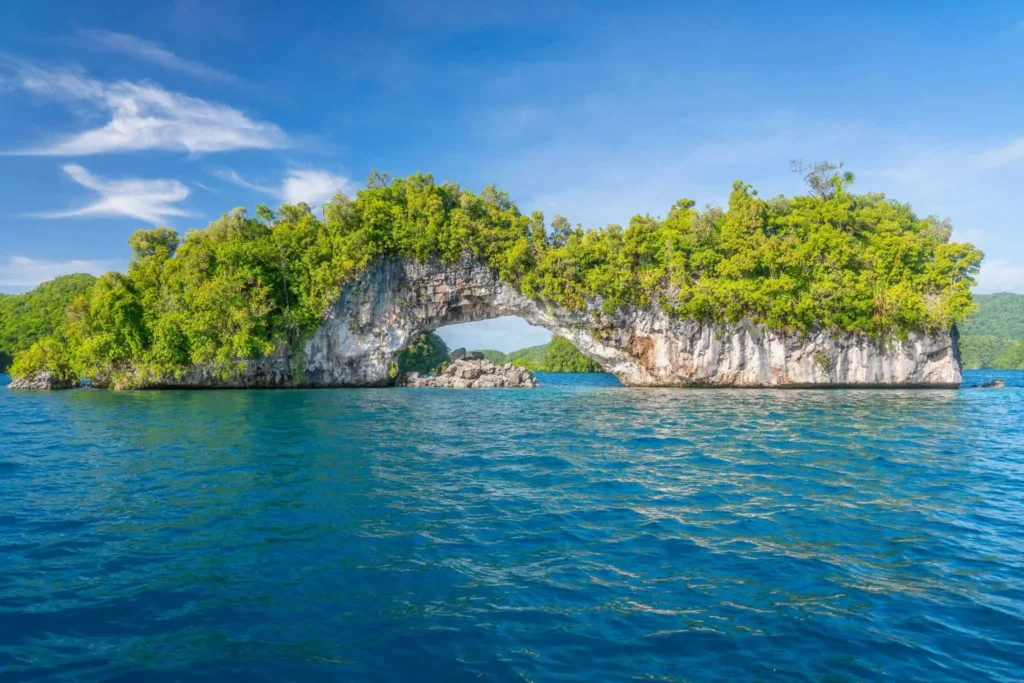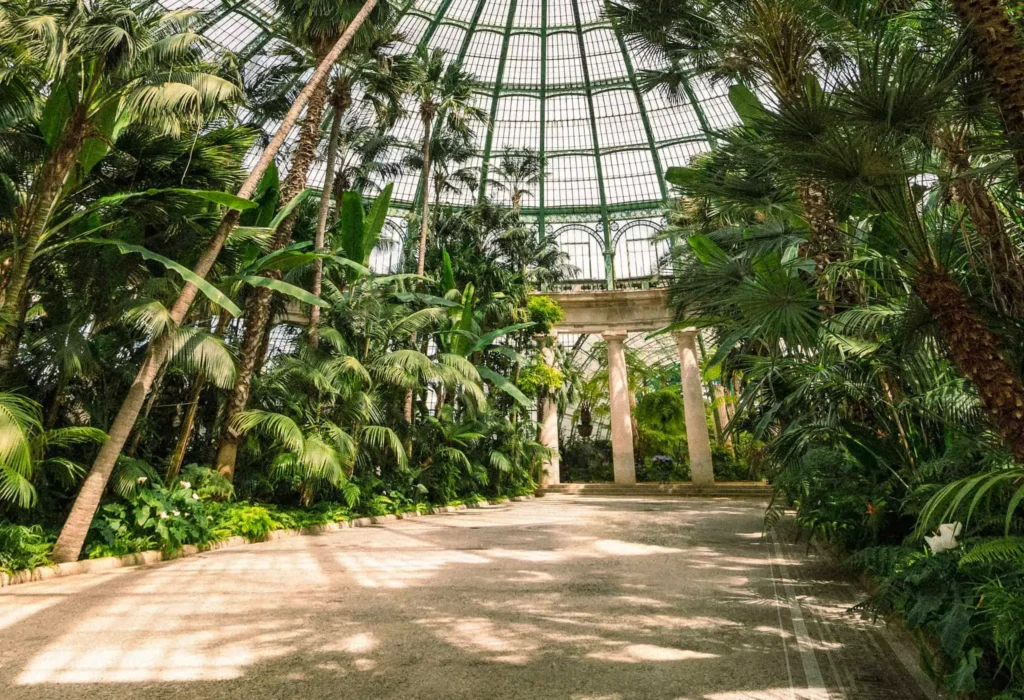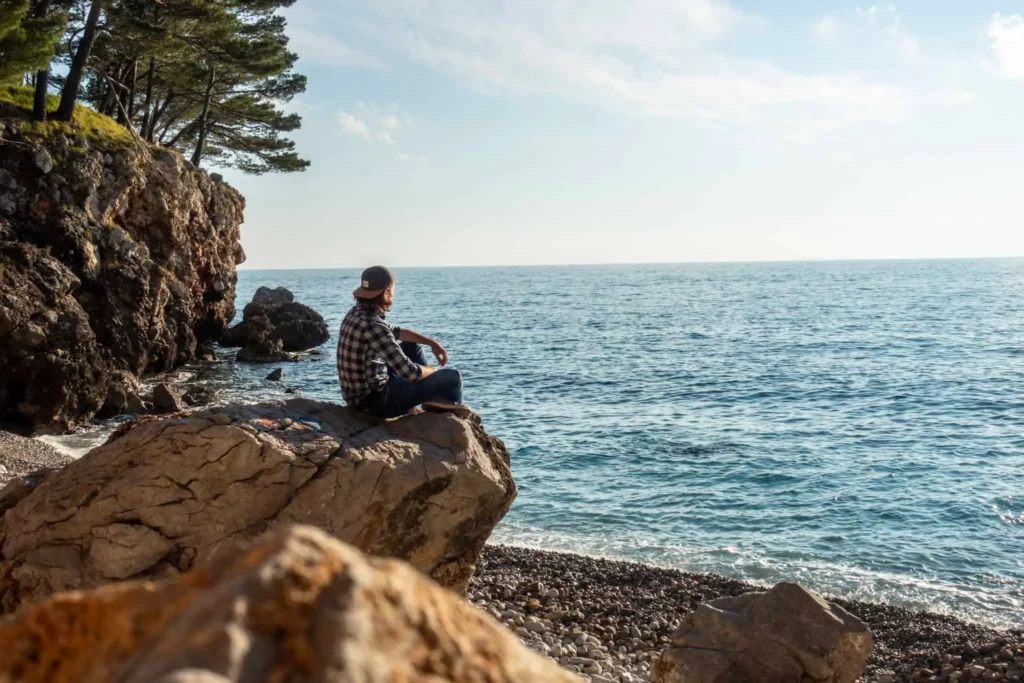| This post may contain affiliate links. Whenever you book or buy something through one of these, Giving Getaway gets a small commission, of which 100% will be donated to charity, without any extra cost to you! |
Are you planning a trip to Japan in 2023? If so, then you’re in for a treat! In this post, I am going to introduce you to the 15 most underrated cities in Japan that you absolutely must visit. These hidden gems are often overshadowed by popular tourist destinations like Tokyo and Kyoto, but they have so much to offer.
From charming historical towns to stunning coastal retreats, each city on this list has its own unique charm and attractions. So, if you’re looking to explore the lesser-known side of Japan and immerse yourself in authentic local experiences, keep reading.
By the way, if you’re already planning a visit to Japan, feel free to click on the ads and affiliate links and use the search widgets provided in this post to help plan and book your trip. It won’t cost you anything extra, but I will earn a commission of which I’ll be giving away 50% of that commission to charity.
And now, get ready to discover the hidden treasures of Japan that will make your trip unforgettable!
1) Kanazawa
Kanazawa, with its rich historical heritage and an impressive number of well-preserved traditional buildings, is often overlooked by travelers, making it one of the most underrated cities in Japan. Located on the west coast of Honshu, the city offers a glimpse into Japan’s feudal past and showcases its exquisite craftsmanship.
One of the highlights of Kanazawa is Kenrokuen, one of Japan’s three most famous gardens. This meticulously designed landscape boasts stunning seasonal beauty with its cherry blossoms in spring, lush greenery in summer, vibrant foliage in autumn, and serene snowscapes in winter. The garden features ponds, streams, bridges, and teahouses, inviting you to immerse yourself in its tranquility.
Another noteworthy attraction is Kanazawa Castle, a symbol of the city’s feudal history. While most of the original castle was destroyed, the beautifully reconstructed Ishikawa-mon Gate and Gojikken Nagaya remain, giving visitors a taste of its former glory. Inside the park, you can also explore the Gyokusen’inmaru Garden, which offers a peaceful retreat.
Kanazawa is also renowned for its traditional arts and crafts. The Nagamachi Samurai District provides a glimpse into the lives of the samurai, with well-preserved residences and narrow streets. The district’s Nomura House, with its elegant gardens and exquisite architecture, offers a fascinating insight into the samurai lifestyle.
In addition to its historical and cultural attractions, Kanazawa is also known for its fresh seafood and local cuisine. The Omicho Market is a bustling hub where visitors can sample a variety of seafood delicacies, including Kanazawa’s famous snow crab.
2) Kanoya
Kanoya, with its various historical landmarks and cultural attractions, offers you many opportunities to immerse yourself in the city’s rich heritage. Located in the Kagoshima Prefecture in southern Japan, Kanoya boasts a unique blend of history and natural beauty. From its ancient temples and shrines to its stunning landscapes and traditional festivals, Kanoya has something to offer everyone.
One of the highlights of Kanoya is the Kanoya Air Base Museum, which showcases the city’s deep connection to aviation history. Here, you can learn about the role the air base played during World War II and explore a collection of vintage aircraft. Another must-visit is the Kanoya Municipal Museum, where artifacts and exhibits provide insight into the city’s cultural heritage.
For nature enthusiasts, Kanoya offers plenty of outdoor activities. The Kirishima-Yaku National Park, located nearby, is a paradise for hikers with its picturesque mountains and hot springs. The park also provides a home for diverse wildlife, including the endangered Kirishima wild boar. The Kagoshima Bay coastline also offers stunning views and opportunities for water sports such as snorkeling and kayaking.
Kanoya is also known for its traditional festivals, such as the Kanoya Summer Festival and the Kanoya Night Festival. These events showcase the city’s vibrant culture and provide a chance to experience local traditions and cuisine.
3) Fukuoka
Fukuoka, a vibrant city located on the northern shore of Kyushu, offers a unique blend of modern attractions and traditional Japanese culture. With its rich history, delicious cuisine, and stunning natural scenery, Fukuoka is a must-visit destination for anyone traveling to Japan.
One of the highlights of Fukuoka is its bustling food scene. The city is known for its Hakata-style ramen, which is characterized by its rich pork bone broth and thin noodles. You can also indulge in fresh seafood at the Yanagibashi Rengo Market or sample local delicacies at the yatai street food stalls that line the city’s streets.
For those interested in history and culture, Fukuoka has a wealth of attractions to explore. The Fukuoka Castle Ruins offer a glimpse into the city’s feudal past, while the Kushida Shrine showcases traditional Japanese architecture and hosts lively festivals throughout the year. The nearby Dazaifu Tenmangu Shrine is also worth a visit, with its beautiful gardens and historic buildings.
In addition to its cultural offerings, Fukuoka is also a modern and cosmopolitan city. The Canal City Hakata shopping complex is a shopper’s paradise, with its wide range of stores, restaurants, and entertainment options. The city is also home to numerous art galleries, museums, and theaters, where you can get to know the vibrant local arts scene.
4) Nagano
Nagano’s breathtaking natural landscapes and world-class ski resorts make it an ideal destination for winter sports enthusiasts and nature lovers alike. Located in central Japan, Nagano is known for its stunning mountain ranges, including the iconic Japanese Alps. These majestic peaks offer a variety of outdoor activities, such as skiing, snowboarding, hiking, and mountaineering.
One of Nagano’s most famous ski resorts is Hakuba. With over 200 ski runs and a diverse range of terrain, Hakuba attracts skiers and snowboarders from around the world. The resort hosted several events during the 1998 Winter Olympics, showcasing its excellent facilities and challenging slopes. In addition to Hakuba, Nagano is home to many other renowned ski resorts, including Shiga Kogen, Nozawa Onsen, and Myoko Kogen, each offering its own unique charm and appeal.
Aside from winter sports, Nagano is also known for its picturesque natural beauty. The region is dotted with hot springs, known as onsen, where you can relax and rejuvenate amidst stunning mountain scenery. Jigokudani Monkey Park is another popular attraction, where visitors can observe Japanese macaques, commonly known as snow monkeys, bathing in natural hot springs.
Nagano’s rich history and cultural heritage also add to its fascination. The city is home to several historic temples and shrines, such as Zenkoji Temple, one of Japan’s most important Buddhist temples. Matsumoto Castle, with its striking black exterior, is another must-visit landmark in Nagano.
5) Shizuoka
Shizuoka’s unique culinary scene and breathtaking coastal landscapes make it an enticing destination for food enthusiasts and nature lovers alike. Located on the central coast of Japan, Shizuoka Prefecture offers a diverse range of attractions that showcase the region’s rich culture and natural beauty.
One of the highlights of Shizuoka is its world-renowned tea production. Known for its high-quality green tea, the prefecture is home to picturesque tea fields that stretch across rolling hills. Here you can enjoy tea tastings and learn about the traditional tea-making process at various tea farms and museums.
In addition to tea, Shizuoka is also famous for its fresh seafood. With its long coastline, the prefecture boasts an abundance of delicious seafood delicacies, including sushi, sashimi, and grilled fish. The bustling fish markets, such as Numazu Fish Market, offer the opportunity to sample a wide variety of freshly caught seafood.
If you are a nature lover, you will be captivated by Shizuoka’s scenic landscapes. The prefecture is blessed with stunning views of iconic Mount Fuji, which can be admired from various vantage points, including Miho no Matsubara, a picturesque pine tree grove along the coast. Outdoor enthusiasts can also explore the Izu Peninsula, known for its rugged cliffs, hot springs, and beautiful beaches.
And for those interested in history and culture, Shizuoka has a rich heritage to explore. The city of Shizuoka is home to the historic Sumpu Castle Park, where you can learn about the region’s samurai past and enjoy the beautiful cherry blossoms during the spring season.
6) Takamatsu
Takamatsu, located in the Kagawa Prefecture, is a hidden gem in Japan that boasts a rich cultural heritage and is known for its impressive Ritsurin Garden, which is considered one of the finest traditional gardens in the country. This city offers a unique blend of history, art, and natural beauty. With its tranquil atmosphere and picturesque landscapes, Takamatsu is a must-visit destination for those seeking an authentic Japanese experience.
One of the main attractions in Takamatsu is the Ritsurin Garden, a masterpiece of Japanese landscape design. This expansive garden features beautifully manicured lawns, ponds, bridges, and teahouses, providing visitors with a serene setting to relax and appreciate nature’s beauty. The garden’s carefully planned layout offers breathtaking views from every angle, making it a popular spot for photographers and nature enthusiasts.
In addition to the Ritsurin Garden, Takamatsu is also home to several historical landmarks and cultural sites. The Takamatsu Castle, a reconstructed castle from the Edo period, offers a glimpse into Japan’s feudal past. The Kagawa Prefectural Museum of Cultural History showcases the region’s history and traditions through its impressive collection of artifacts and exhibits.
Takamatsu is also known for its thriving arts scene. The city is home to numerous art galleries and museums, including the Kagawa Museum of Art, which houses a diverse collection of contemporary and traditional Japanese artworks. The Setouchi Triennale, an international contemporary art festival held in the Seto Inland Sea, attracts artists and art enthusiasts from around the world.
7) Nagasaki
How has Nagasaki’s history shaped its unique cultural identity? Nagasaki, an underrated Japanese city located on the southern island of Kyushu in Japan, has a rich and complex history that has greatly influenced its cultural identity. From being a major port for international trade to being devastated by the atomic bomb during World War II, Nagasaki’s history has left a profound impact on its people and their way of life.
One of the key factors that has shaped Nagasaki’s cultural identity is its history as a center of international trade. During the 16th century, Nagasaki became a hub for trade with countries like China, Portugal, and the Netherlands. This led to the introduction of foreign cultures and ideas into the city, resulting in a unique blend of Japanese and Western influences that can still be seen today. Nagasaki’s Chinatown and the historic Dutch Slope are testament to this rich cultural fusion.
Additionally, Nagasaki’s tragic experience as the second city to be hit by an atomic bomb in 1945 also plays a significant role in its cultural identity. The city’s determination to rebuild and promote peace has become a cornerstone of its identity. The Peace Park and the Atomic Bomb Museum serve as reminders of the devastating consequences of war and the importance of promoting peace.
Furthermore, Nagasaki’s history as a center of Christianity in Japan has also shaped its cultural identity. The city was one of the few places in Japan that allowed the practice of Christianity during the period of national isolation. As a result, Nagasaki has a strong Christian presence and is home to numerous churches and religious sites.
8) Kanonji
Kanonji, a city located in the Kagawa Prefecture, is frequently overlooked by travelers despite its historical significance and cultural attractions. Situated on the northern coast of Shikoku Island, Kanonji offers a unique blend of traditional charm and modern amenities that make it a hidden gem worth exploring.
One of the main attractions in Kanonji is the Kanonji Castle Ruins, which date back to the 13th century. Although only the foundations remain, the ruins offer a glimpse into the city’s feudal past and provide a picturesque backdrop. Nearby, the Kanonji Museum showcases artifacts and exhibits that highlight the region’s history and cultural heritage.
For those seeking spiritual enlightenment, Kanonji is home to several important Buddhist temples. The most renowned is Kokubunji Temple, one of the oldest in Japan, dating back over 1,200 years. Here you can explore the temple grounds, admire the beautiful architecture, and participate in Buddhist rituals such as meditation and prayer.
In addition to its historical and cultural attractions, Kanonji is known for its natural beauty. The city is surrounded by lush mountains and offers stunning views of the Seto Inland Sea. Nature enthusiasts can hike through the scenic countryside, visit the nearby Ritsurin Garden, or take a leisurely boat ride to the nearby islands.
9) Takayama
Rarely do travelers venture to the picturesque town of Takayama, nestled in the Japanese Alps, but those who do are rewarded with a charming blend of traditional architecture, local crafts, and vibrant festivals. Takayama is a hidden gem, often overshadowed by popular destinations like Tokyo and Kyoto, but it offers a unique and authentic experience for those seeking a deeper understanding of Japanese culture.
One of the highlights of Takayama is its well-preserved old town, known as Sanmachi Suji. Walking through the narrow streets lined with traditional wooden houses, you can immerse yourself in the rich history of the town. The buildings, many of which date back to the Edo period, are beautifully adorned with intricate carvings and latticework. It’s like stepping back in time.
In addition to its architectural beauty, Takayama is known for its local crafts. The town is famous for its lacquerware, pottery, and textile products, all of which are meticulously crafted by skilled artisans. Explore the numerous shops and galleries to admire and purchase these unique handmade goods, making for a perfect souvenir to take home.
Takayama also hosts several colorful festivals throughout the year, the most famous of which is the Takayama Festival. This festival dates back over 300 years and features elaborate floats, traditional music, and performances. It is a celebration of the town’s cultural heritage and draws crowds from all over Japan.
10) Karuizawa
Nestled amidst the picturesque landscapes of Nagano Prefecture, Karuizawa offers a serene retreat from the bustling cities of Japan. This charming town, located just an hour away from Tokyo by train, is a hidden gem that often goes unnoticed by travelers. However, those who venture to Karuizawa are rewarded with a unique blend of natural beauty, cultural attractions, and a relaxed atmosphere.
One of the main attractions of Karuizawa is its stunning natural surroundings. The town is surrounded by lush forests, pristine lakes, and majestic mountains, providing ample opportunities for outdoor activities such as hiking, cycling, and golfing. The famous Shiraito Falls, with its cascading waterfalls and crystal-clear streams, is a must-visit for nature lovers.
In addition to its natural wonders, Karuizawa is also known for its rich history and cultural heritage. The town is home to several historical sites, including the Karuizawa Prince Hotel, which was once a favorite vacation spot for the Japanese royal family. The old-fashioned shopping streets, lined with quaint boutiques and charming cafes, also offer a glimpse into the town’s past.
Moreover, Karuizawa is a popular destination for art enthusiasts, as it houses several art museums and galleries. The Hiroshi Senju Museum showcases the works of the renowned Japanese painter, while the Karuizawa New Art Museum features contemporary art exhibitions.
11) Okayama
Okayama, known as the ‘Land of Sunshine,’ offers a serene escape from the bustling city life with its 29 beautiful gardens. Located in the Chugoku region of Japan, Okayama is often overshadowed by popular tourist destinations. However, this underrated city has a lot to offer for those seeking a unique and authentic Japanese experience.
One of the main highlights of Okayama is its stunning gardens. The most famous one is the Korakuen Garden, which is considered one of the three most beautiful gardens in Japan. Built in the early 18th century, this traditional Japanese garden features scenic landscapes, ponds, tea houses, and charming walking paths. It is a perfect place to relax, meditate, and immerse oneself in the tranquility of nature.
Another must-visit garden in Okayama is the Okayama Castle Garden. This garden surrounds the Okayama Castle, a reconstructed castle that offers panoramic views of the city. The garden is meticulously landscaped with cherry blossom trees, ponds, and stone bridges, creating a picturesque setting that is especially enchanting during the cherry blossom season.
Aside from its gardens, Okayama also has a rich cultural heritage. The Okayama Prefectural Museum of Art houses an impressive collection of Japanese and Western art, including works by renowned artists such as Monet and Picasso. The Bikan Historical Quarter, a preserved district from the Edo period, showcases traditional Japanese architecture and offers a glimpse into the city’s past.
12) Beppu
Beppu, famous for its hot springs and unique geothermal activity, offers a one-of-a-kind experience to immerse yourself in the healing properties of the city’s natural wonders. Located on the southern island of Kyushu, Beppu is known as the “Onsen Capital” of Japan, boasting the highest volume of hot spring water in the country.
With over 2,800 hot spring sources, Beppu provides a diverse range of bathing experiences that cater to every preference and need. From traditional communal baths to private outdoor onsens, you can indulge in the therapeutic benefits of the mineral-rich waters while enjoying the picturesque surroundings.
One of the highlights of Beppu is the “Jigoku Meguri” or “Hell Tour,” which takes you to the city’s unique and colorful hot springs that are too hot for bathing. These geothermal wonders include the Umi Jigoku (Sea Hell), with its vibrant cobalt-blue waters, and the Chinoike Jigoku (Blood Pond Hell), known for its crimson-colored pool. These captivating sights offer a glimpse into the powerful forces that shape the city’s landscape.
In addition to its hot springs, Beppu is also home to a variety of other attractions. The Beppu Tower provides panoramic views of the city and its surrounding natural beauty, while the Beppu Ropeway offers a scenic ride to the top of Mount Tsurumi. For those interested in traditional Japanese culture, the Kannawa District features historic bathhouses and traditional wooden buildings.
13) Kobe
When it comes to underrated cities in Japan, Kobe deserves a spot on your travel list. Located in the Hyogo Prefecture, this vibrant city offers a unique blend of modern attractions and rich cultural heritage.
One of the highlights of Kobe is its stunning waterfront area. Take a stroll along Harborland, a bustling entertainment district filled with shops, restaurants, and entertainment venues. You can also enjoy a romantic cruise in the evening, admiring the city lights reflected on the water.
For history enthusiasts, a visit to Kobe’s Kitano-cho district is a must. This charming neighborhood is known for its beautifully preserved Western-style houses, showcasing the city’s international influences. Explore the former residences of foreign diplomats and merchants, and immerse yourself in the elegant atmosphere of the past.
Of course, no trip to Kobe would be complete without trying its famous local delicacy, Kobe beef. Indulge in a mouthwatering steak at one of the city’s top-notch restaurants, and savor the tender, flavorful meat that has made Kobe renowned worldwide.
Nature lovers will also find solace in Kobe’s surrounding areas. Just a short train ride away, you can discover the enchanting Arima Onsen, one of Japan’s oldest hot spring towns. Relax in the therapeutic mineral waters and embrace the serene ambiance of this traditional retreat.
14) Hakodate
When visiting Japan, Hakodate is definitely a city that should not be overlooked. Located in the southernmost part of Hokkaido, this charming city offers a unique blend of historical charm and natural beauty.
Hakodate is perhaps best known for its stunning night view from Mount Hakodate. As the city lights up, you can witness a breathtaking panoramic view of the entire city and its surrounding areas. It’s truly a sight to behold and one that shouldn’t be missed during your visit.
Apart from its scenic beauty, Hakodate also has a rich history to explore. The city was one of the first to open its ports to foreign trade in the late 19th century, resulting in a mix of Japanese and Western influences. This is evident in the architecture of many buildings, such as the iconic red-brick warehouses that have been converted into shops and restaurants.
Speaking of food, Hakodate is a culinary haven. Seafood lovers will be delighted by the fresh and delicious seafood offerings, including the famous Hakodate squid. Don’t forget to try the local specialty, Hakodate ramen, which is known for its rich and flavorful broth.
In addition to its cultural and gastronomic offerings, Hakodate also boasts natural attractions. You can take a stroll along the scenic Motomachi district, visit the beautiful Goryokaku Park, or relax in one of the city’s hot springs.
15) Hiroshima
Hiroshima is mainly known for its tragic history and remarkable resilience, due to the devastating consequences of the atomic bomb. Located on the southwestern coast of Honshu Island, Hiroshima is the capital city of Hiroshima Prefecture and is home to over 1.1 million residents.
The city’s history is forever marked by the events of August 6, 1945, when an atomic bomb was dropped by the United States, resulting in the destruction of the city and the loss of tens of thousands of lives. However, Hiroshima has risen from the ashes and transformed itself into a thriving metropolis that stands as a testament to human resilience and determination.
Today, Hiroshima is a vibrant city with a rich cultural heritage. Explore the Peace Memorial Park, which encompasses the iconic Atomic Bomb Dome – a UNESCO World Heritage Site – as well as numerous monuments and memorials dedicated to the victims of the bombing. The Hiroshima Peace Memorial Museum provides a comprehensive look into the devastating effects of the atomic bomb and serves as a reminder of the need for global peace and disarmament.
Beyond its historical significance, Hiroshima offers a wealth of attractions for visitors. The city is known for its delicious local cuisine, including Hiroshima-style okonomiyaki, a savory pancake filled with various ingredients. The Shukkeien Garden, a beautiful traditional Japanese garden, provides a tranquil retreat from the bustling city center.
Conclusion
So there you have it, the 15 most underrated cities in Japan to visit in 2023. From the historic charm of Kanazawa to the natural beauty of Takayama, these hidden gems offer a unique and authentic experience for travelers seeking to explore beyond the popular tourist destinations.
So why not venture off the beaten path and discover the lesser-known cities that have so much to offer? Don’t miss out on the opportunity to uncover the hidden treasures of Japan and create memories that will last a lifetime.
While you are planning your trip, please consider using the search widgets or clicking on the ad banners on this website to book your accommodation, flight, car rental, and more. Every completed booking earns the organization a commission, 50% of which will be used to put on charity events like the 2021 Christmas gift drive for kids and teens in a children’s home in Montenegro.
So, not only will you be enjoying an unforgettable vacation, but you’ll also be contributing to an amazing cause!

